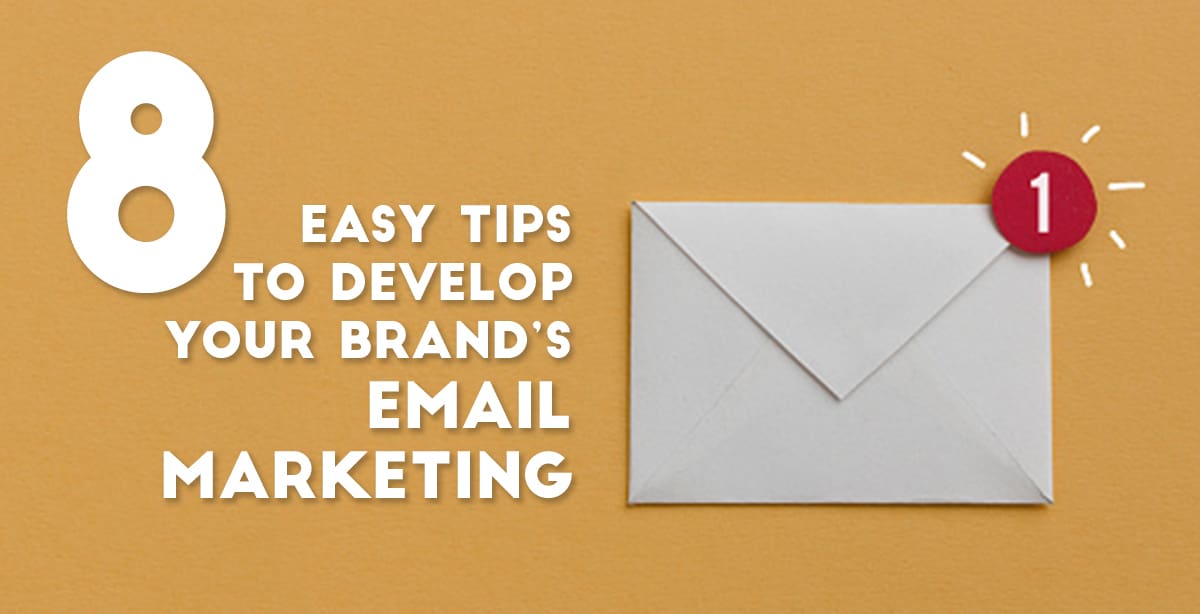
The first marketing email was sent in 1978, and it kicked off what has become one of the most highly used marketing channels even to this day — not to mention it resulted in $13 million in sales. From the beginning, email launched itself as an effective channel for direct marketing.
Up until the 1990s, direct marketing was mostly done by post or by phone, which were both expensive. Email was introduced as a cost-effective, quick way to reach consumers. Back during the 1990s, email was still seen as a novelty for some consumers. However, as more and more marketers jumped on the bandwagon, inboxes soon became cluttered with unsolicited mailings, and rules began to be put in place to protect consumers from spam.
During this time, it was acknowledged that it was no longer good enough to send an email and hope it would reach the inbox and be opened. If marketers wanted their emails delivered, opened and even read, they needed to be more strategic with what they were sending.
Email marketing can build your brand, turn customers into loyal supporters and establish you as a trustworthy source. But that’s also why using emails to merely announce a sale or send a newsletter doesn’t even come close to fully exploiting the true potential of email marketing. Below are eight easy tips to develop your brand’s email marketing.
1. Ask permission
A brand will never grow by ignoring the preferences of its customers. Before you begin sending an email campaign to those on your lists, always make sure to get their permissions first.
According to the General Data Protection Regulation (GDPR), you should acquire positive consumer consent before starting to flood inboxes. This should be integrated via an easy-to-use and easy-to-understand explanation of how you will use the personal data for which you are seeking permission. It’s recommended that you do not ask for any information that has nothing to do with sending emails, such as mailing addresses.
In addition, you should use different opt-in boxes for newsletters and promotional emails. The GDPR suggests that you should have explicit consent for every type of communication and data processing. Not asking for permission puts you and your brand at major risk: Recipients you want to win over might report you as spam.
How asking permission impacts your brand:
Asking permission shows you care for your customers and will put them above everything else. This will strengthen your brand as a business that devotedly obeys the law.
2. Take a customer-centric approach
Personalization is the most basic tactic for an effective email marketing strategy. If your brand is considering each customer for a pleasant customer experience before and after a purchase, this will only increase your probability for repeat business and even encourages customer loyalty.
To complete this process accurately, ask your customers the right questions when the subscriber signs up. By developing questions that will create a customer-centric experience, your brand will gain confidence. You can also segment subscribers based on the information you obtain and send relevant emails to a variety of lists.
How personalization impacts your brand:
Personalization represents the highest form of targeted marketing when you craft specific messages for individual customers. This will develop your brand as having a positive customer approach.
3. Adhere to your branding guidelines across your emails
You should be following your branding guidelines so that the subscribers can instantly recognize your brand. Elements like your logo, font type, email layout and tone of the emails should be consistent in order to build a stronger rapport with the subscribers.
In line with focusing on the tone of the email, it’s also relevant to focus on engaging and informative copy. It should be written in a way that offers valuable information to the subscriber. You want it to be engaging enough to capture the recipient’s attention and keep him or her hooked to your brand. Showing off your brand’s personality or culture is beneficial to your familiarity.
How consistency impacts your brand:
A brand that adheres to cohesive brand standards across all of its channels will be more successful than a brand that is disconnected throughout its outlets. When a customer recognizes a brand by the look, feel and tone, he or she is more likely to admire that brand.
4. Be innovative
If you want to build your reputation through your emails, think of creative ideas that can help you stand out in the subscriber’s inbox. Obviously, there will always be intense competition, and innovation is the only way to stand out. Ideas that you could include are visual elements that can convey your message more effectively and impress your subscribers at the same time, such as GIFs or relevant images.
You also can incorporate the principles of gamification, “the process of incorporating game mechanics into non-gaming realms so that you can drive the desired behavior from your readers.” This tactic could work best during the holiday season or on special occasions like Valentine’s Day, Mother’s Day, Easter, etc.
How innovation impacts your brand:
Being innovative whenever you are conceptualizing your emails will give your brand a lot of credibility. Customers are constantly looking for the next biggest and brightest thing. When you end up giving them what they want, they are likely to spread the word that your brand is kicking butt.
5. Integrate social media marketing into your emails
Brands that want better visibility in the digital marketplace will have to drive more visits to their websites and attract organic followers to their social media accounts. Emails are a great way to help with this! Including social media icons and links in your emails will let subscribers interact with you on these platforms, giving you more credibility, yet again.
Social networks are so well established that the core “top five” networks don’t change that much from year to year. However, a study by Smart Insights shows that knowing the difference in your social platforms based on popularity within your region and demographics is key.
How a social media presence impacts your brand:
An active social media presence can build so much trust among the subscribers and connect with them on a personal level. They are also able to gain information and news based on a live social media feed, and that will boost your social media engagement through email marketing.
6. Make sure your landing page is cohesive
It is very important that your email campaign and landing page complement each other well. The pre-click experiences, or email copy and call-to-action, and the post-click experience, or the layout of your landing page, all need to coincide. They should be in perfect sync. Marketers who neglect this fact and redirect the customer to a website that has content unrelated to the email are giving the subscriber a terrible experience. Your email needs to guide the subscriber to the corresponding page, which will shed more light on the offer highlighted in the email.
How cohesiveness impacts your brand:
Marketers who focus on a cohesive statement throughout all their channels will have a better success rate. The overall feel and integrity of a brand that comes across in an email and over to the landing page will give the subscriber a better experience and will help them understand who you are.
7. Test, test, test
To build a credible brand, it is of the utmost importance that your emails render well across all email clients and devices. A broken email layout might harm your brand reputation and turn your subscribers into non-subscribers. This is why is it so important to test, test and test again.
An effective email marketing campaign should be designed to be read on all devices — desktop, tablet and mobile. Email campaigns that are designed for mobile devices are especially important. 73% of companies today prioritize mobile device optimization when creating email marketing campaigns. And, almost every report on email open rates concludes that mobile is responsible for at least 50% of all opens.
Other coding features to focus on in your emails so that they render well across all devices include: using standard bullets rather than custom bullets; including alt tags for all images and CTAs; refraining from using “Float” and “Clear” coding, since this doesn’t work on Outlook; coding with HTML table tags instead of div tags; avoiding Javascript and much more. It is key that you use these tips when initially creating your email, but the overall takeaway is to test and make sure your email renders well across all devices.
It’s also important in this step to sign up as a subscriber for your own brand. A subscription represents a certain level of commitment from a reader. It means they’re invested in your brand, are interested in what else you have to say and teach, and are more likely to buy a product you’ve created. Being a subscriber to your own brand’s emails, you can test the way you feel about a campaign and its overall capabilities with your audience.
How testing impacts your brand:
Testing can make or break your brand. If you don’t test on all devices and platforms and your email is broken, it will crush your sense of reliability. Testing is your companion when it comes to creating your brand through email marketing, and you cannot leave it behind.
8. Integrate an automation workflow
Email automation has been used expansively by brands to enhance online visibility and reputation. Automation usually refers to setting up behavioral email campaigns that are triggered according to the interactions of the subscribers and their stages in the purchase journey. The many types of automation email work to nurture the prospects and drive them closer to the conversion point.
Emails that you should include for your brand are:
- A welcome email. As soon as a subscriber signs up, your brand should use automation in welcoming them to the family.
- Promotional emails based on products searched for or past purchases. You could include this in your brand strategy by adding an engagement opportunity into your order notifications. While all customers open their order-status emails because they want to know where their items are at, consider adding in an offer the customer can’t resist. Everyone loves a good discount!
- Cart-abandonment emails. Once a customer leaves their cart without making a purchase, they should receive an email from your brand to remind them that they left something behind. This is especially well done when you use urgent messages to grab the customer’s attention.
- Re-engagement emails to subscribers who haven’t been active. If there is a large number of subscribers who aren’t actively reacting to your emails, you will want to consider re-engaging them. If they haven’t engaged in over 6 months, offer them a sweet deal they can’t resist — and if they don’t bite, consider removal from your database.
You not only need to create emails and give the conditional case to trigger them — you’ll also have to keep a close eye on these campaigns and optimize them for best results. Mistakes in automated emails can hurt your brand reputation and be a major setback for your marketing efforts.
How automation impacts your brand:
If done right, successful automation campaigns can increase your sales or utilization of your services significantly. Email marketing lends well to automation, and in fact, automating your emails helps improve the relevance and timeliness of your campaigns.
Email is a big part of our lives as professionals, individuals and even consumers. According to The Radicati Group, more than half of the world’s population uses email as of 2019. This number is expected to increase to more than 4.3 billion by 2023. This presents a great opportunity for businesses of all sizes to reach their target market. By adding email marketing to their list of digital marketing tactics, brands can improve their reach and visibility, allowing them to engage and convert more leads on a consistent basis.
Need expert help with your email marketing campaigns? At The Brandon Agency, our fully integrated marketing firm boasts a team of seasoned specialists who can help increase the effectiveness of your email marketing efforts and much more — including web design, brand strategy, creative, interactive, social media, analytics, conversion rate optimization, SEO and more — all in one place. To get started with help ranging from a single campaign analysis to a comprehensive strategy tailored to boost the performance of all of your marketing campaigns, contact us today.
Marissa Locher
Email Marketing Manager
Marissa is currently an Email Marketing Manager at Brandon but has held a variety of marketing and communications positions throughout her career. Originally from Wisconsin, Marissa got her Bachelor of Arts in Graphic Design and Advertising from the University of Wisconsin-Milwaukee. When Marissa isn’t in the office, she enjoys being outside whether that is hiking or living on the beach, live music and camping with her husband and dog.
By subscribing to our newsletter, you agree to our Privacy Policy.





